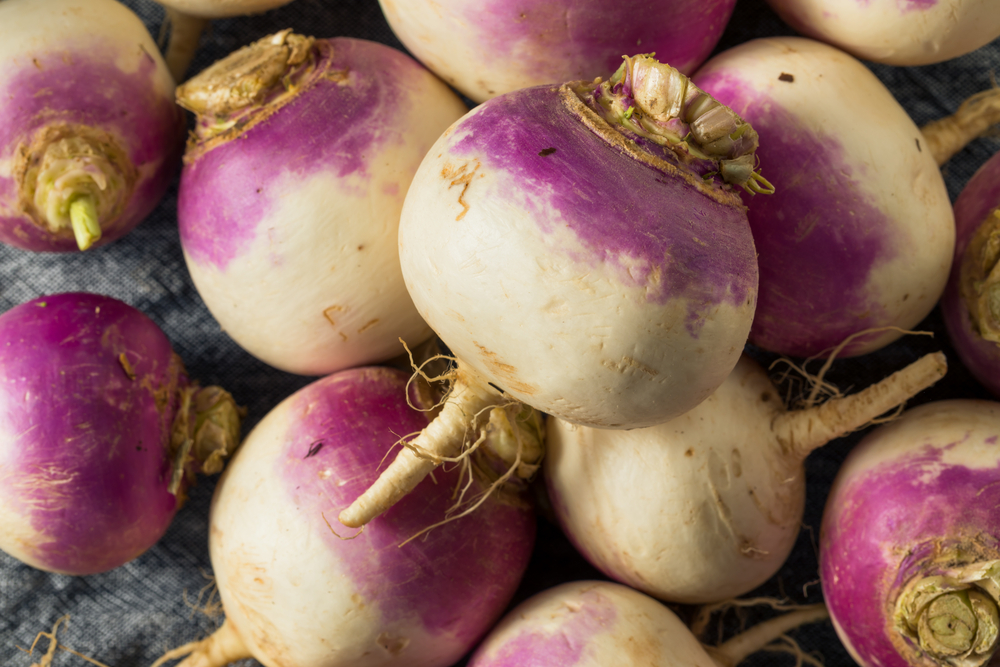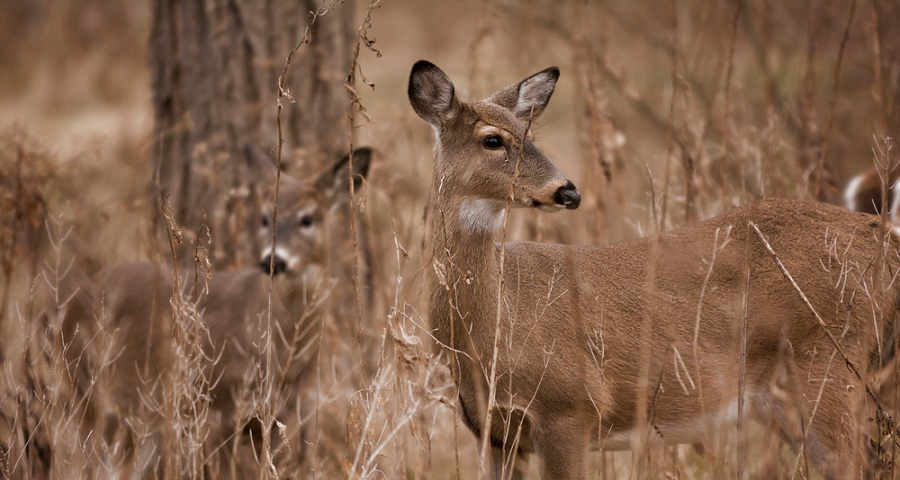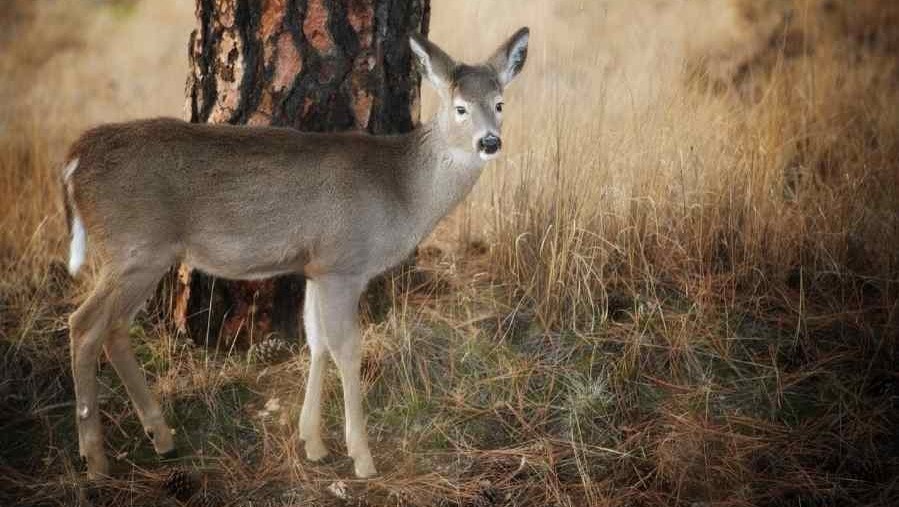Archery seasons have now opened across much of the nation. This presents an extensive opportunity for hunters to go afield, in search of early-season success. However, in order to find success, one must first understand how to maximize their efficiency when hunting during these earliest weeks of season, and the special challenges which these times present.
The following are 5 keys to assist you in finding success during the initial days of the archery season.
Contents (Jump to Topic)
Toggle1. Key In On Food Sources
During the early season, deer typically follow a simple bed to feed pattern. The rut is still more than a month away, and the only concern in a whitetail’s world is how best to avoid danger while filling their stomach.
In many cases, it can be relatively simple to pattern deer during the early season, if only you are aware of what to look for.

The simplest way to pattern deer of any given area is to study the favored food sources that are located nearby. In most cases, this will include agricultural fields, such as corn or soybean fields, which are prevalent in much of the country during this time of the year.
Glassing these fields from a distance, with a pair of quality binoculars, will generally allow you to study when and where deer are utilizing these food sources.
Knowing this information will allow you to select the best field edges to hunt, choose the most highly trafficked trail to monitor, and decipher when best to be in your climbing tree stand. Because of this, a hunter is provided with greater than average odds of a successful harvest.
2. Pay Attention To Watering Holes
Like any other form of wildlife, deer require ample hydration for survival. This is never more true than during the earliest days of archery season when temperatures in most states are typically rather warm.
In weather such as this, deer will travel to nearby water holes multiple times throughout the day. This presents ample opportunity for insightful hunters.
While most hunters would be inclined to assume that deer favor larger water sources, such as rivers and creeks, this is often not the case.
In most situations, especially during daylight hours, deer will prefer smaller, more secluded watering holes.
In many instances, these watering holes will be little more than a small pond in the woods, adjacent to nearby bedding cover.
Placing a trail camera around these preferred watering holes can be an excellent way to pattern early season deer.
Within a matter of 1-2 weeks, you will be able to decipher when, and how frequently deer of the area visit a particular site, which aids in developing the best strategic approach to hunting it.
3. Be Mindful Of Your Scent
It is no secret that a whitetail relies heavily upon its nose when attempting to avoid danger. As such, hunters are regularly given away by their scent. This can be a more significant problem during the early season when warm weather causes a hunter to sweat as they travel to and from their stand.
Additionally, the humid, dense air, which is commonplace during the earliest days of the season, causes odor molecules to settle toward the ground.
This further complicates the matter of concealing human odor and remaining undetected by the ever-vigilant nose of a whitetail deer.
In order to minimize your human odor, a strict scent control regime can be followed. This includes washing all hunting clothes in scent-free detergent, showering before a hunt in scent-free body wash, spraying down with scent eliminator prior to going afield, and only hunting from stand sites that provide you with a favorable wind.
When all of these practices are employed, the chances of filling your tags during the early season skyrocket.
4. Keep Pressure To A Minimum
During the early days of season, whitetail deer tolerate little in the way of intrusion. Any pressure that is imparted can quickly cause deer to alter their daily habits, making it increasingly difficult for a hunter to successfully pattern and hunt them.
For this reason, care should be taken to keep pressure to an absolute minimum, whether hunting, hanging stands, or checking trail cameras.
In order to facilitate this, avoid making unnecessary intrusions into your hunting area. If you must check your trail cameras or hang a new stand, do so during the middle of the day when deer are least likely to be encountered.
This can be an especially potent strategy if timed to coincide with incoming rain. Any human scent that is deposited will be washed away by subsequent rainfall, thereby minimizing the risk of alerting game to your presence.
When hunting, choose your entry and exit routes wisely, as this will lessen the chance of inadvertently spooking deer.
It can also be wise to spread your efforts out between multiple stand sites, to minimize the risk of imparting excess pressure on any one particular site. Alternatively, if only one site is available to hunt, plan your outings in a staggered manner, as to avoid overhunting.

5. Prepare For The Next Transition
Hunting whitetails is a game of stages. During the earliest days of season, deer are typically keyed in on agricultural fields. When late October arrives, rutting activity begins to ramp up.
However, there is a period of time between these stages that many hunters struggle with, which is often referred to as the October lull. During this period, most crops have been harvested, but the rut has yet to come to pass.
In the majority of cases, deer have simply transitioned to an alternative food source, which few hunters have scouted out in preparation.
During the last few days of September, and the first several weeks of October, many oak trees begin to drop their acorns. When this occurs, deer often forsake other food sources, in favor of this seasonal favorite.
In order to prepare for this transitional period, begin looking now for oak flats within the areas that you hunt. It can even be a great idea to hang a stand or two along travel corridors to and from these locations.
In the weeks to follow, you can rest assured that these spots will become heavily trafficked by deer who are keying in on this newly discovered food source.
Making The Most Of Early Season
The earliest portion of bow season can indeed be one of the most productive times to be afield. However, much of a hunter’s success, or lack thereof, will be directly reflective of their level of preparedness for this unique time of year.
By utilizing these key steps to early-season success, you will be well on your way to punching your tag before most hunters’ seasons have even begun.






